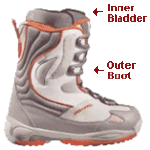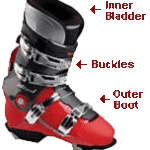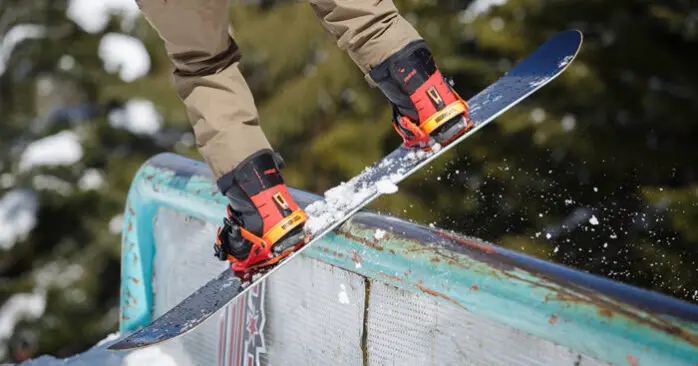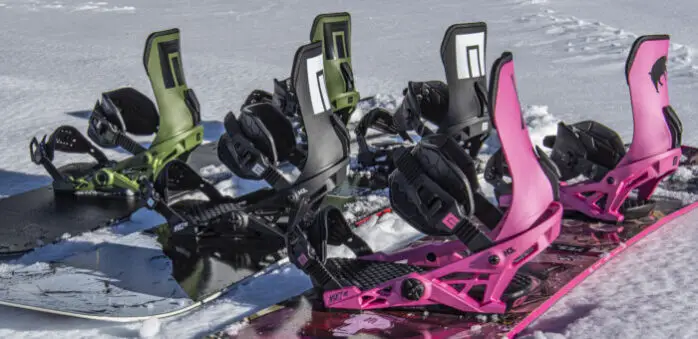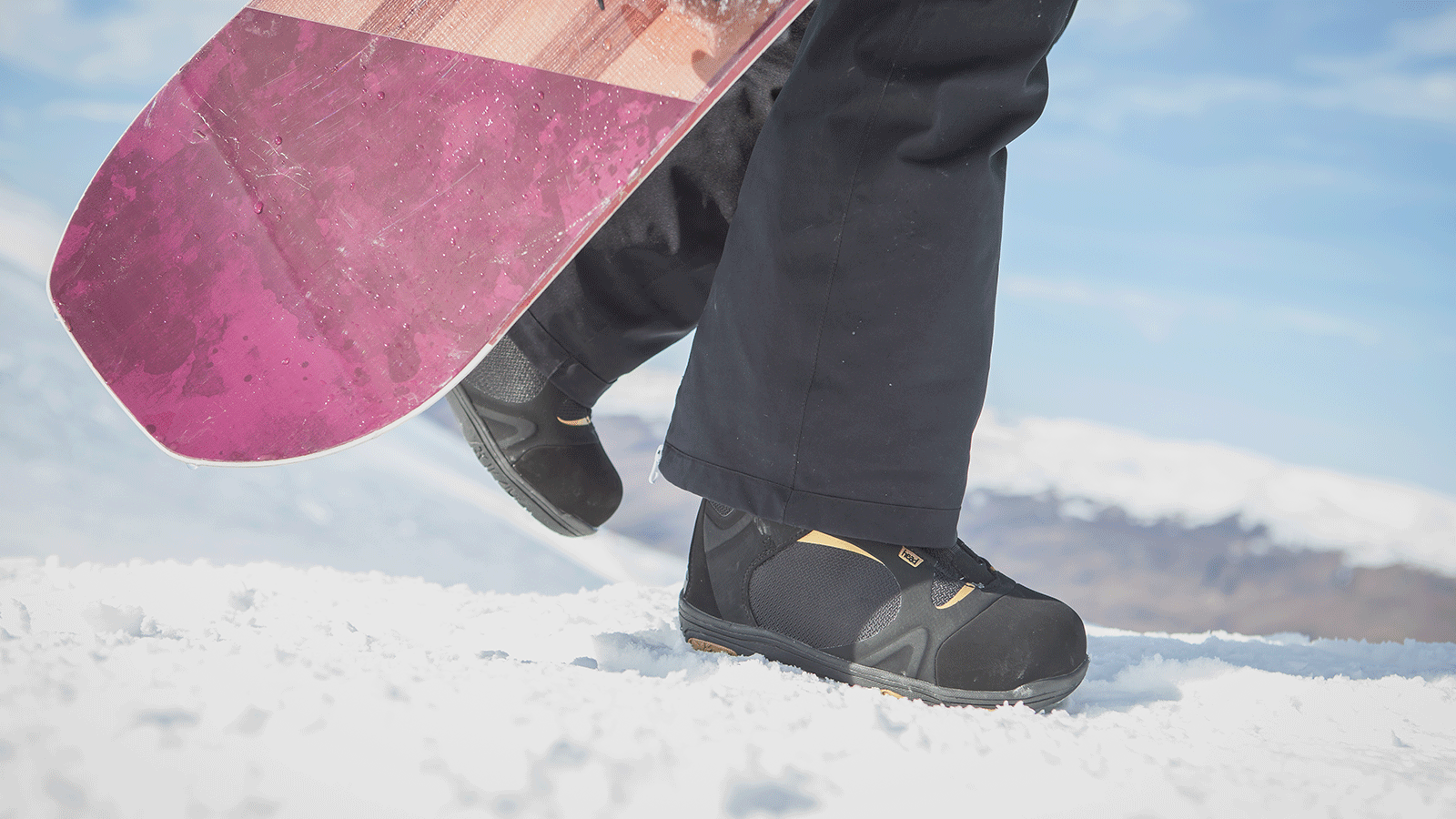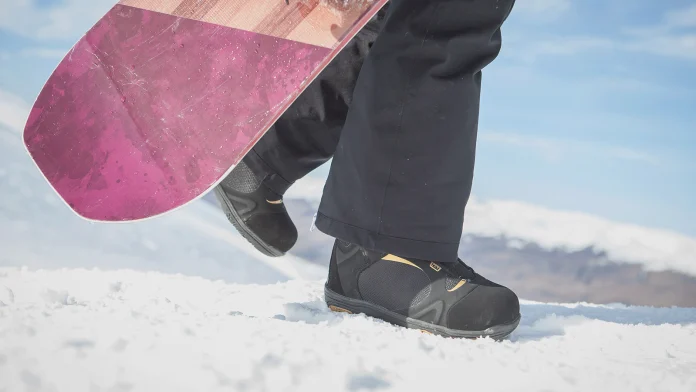
Good Snowboard Boots should give you maximum control over your Snowboard, protect your feet and ankles from the pressures of high speed turns, and keep your feet warm and breathing in all weather conditions at the same time. Boots come in many variations and Styles. There are Different Types of Snowboard Boots appropriate for the Three Riding Styles in Snowboarding. Currently, a lot of boarders prefer soft boots with Strap Snowboard Bindings, but step-ins are a convenient alternative. What follows are descriptions of the most common types of Snowboard Boots:
Soft Boots
Soft Boots are most comfortable and can be used with highback bindings and flow-in bindings. This type of Snowboard boot allows for a large amount of movement in just about any direction.
Consequently, soft boots are a must for pulling tricks since they are great for doing whatever you want.
Soft Boots consist of two parts: an inner bladder and an outer boot. The inner bladder is padded to keep your feet warm, dry, and protected from heavy impacts. It usually has its own lacing so you can tighten the inner bladder independently from the outer boot. The outer boot has a sturdy upper part that allows for ankle movement. The outer lacing allows you to further tighten the Boots.
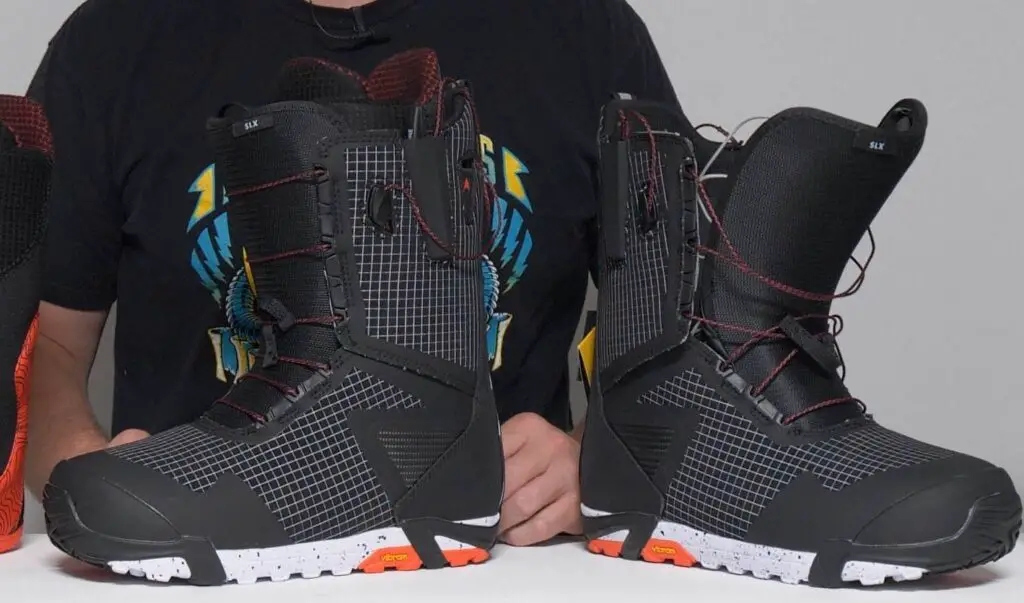
In contrast to Hard Boots and Ski Boots, Soft Boots are pretty comfortable for walking and even driving your car when you’re not on the board. Soft Boots are currently the Most Popular Type of Snowboard Boots and are preferred by Freestylers and Freeriders.
Although there is a wide range of Soft Boot Styles for both Freestyle and Freeride Snowboarding, the main difference in the different styles is in the degree of Boot Flex. Soft Boots with a stiffer upper boot and a higher cuff with a lace-up inner boot for enhanced firmness are Freeride Soft Boot Styles. Conversely, Soft Boots with loose, molded-foam inner boots for more flexibility are Freestyle Soft Boots.
Hard Boots
This Type of Snowboard boot is designed for precise control. Hard Boots support your foot, ankle, and lower leg firmly, making them best for racing and high-speed carving on hard snow. Hard Boots have a padded inner bladder similar to the ones in Soft Boots. The outer shell however is made out of hard plastic and is usually adjusted (or closed) using buckles or ratchet bails. The benefit of having hard plastic as an outer shell is that it gives riders more precision and power in edging movements.
Hard Boots resemble traditional Ski Boots. However, the Hard Boots have lateral mobility for the ankle. To provide some flexibility, hinges are often built into the ankles. The soles of Hard Boots usually have a mechanism that allows them to be connected to Plate Bindings. Hard Boots are often used with plate bindings by Alpine Racers who want their movement to be directly transferred from the Hard Boots and Snowboard Bindings onto the Snowboard.
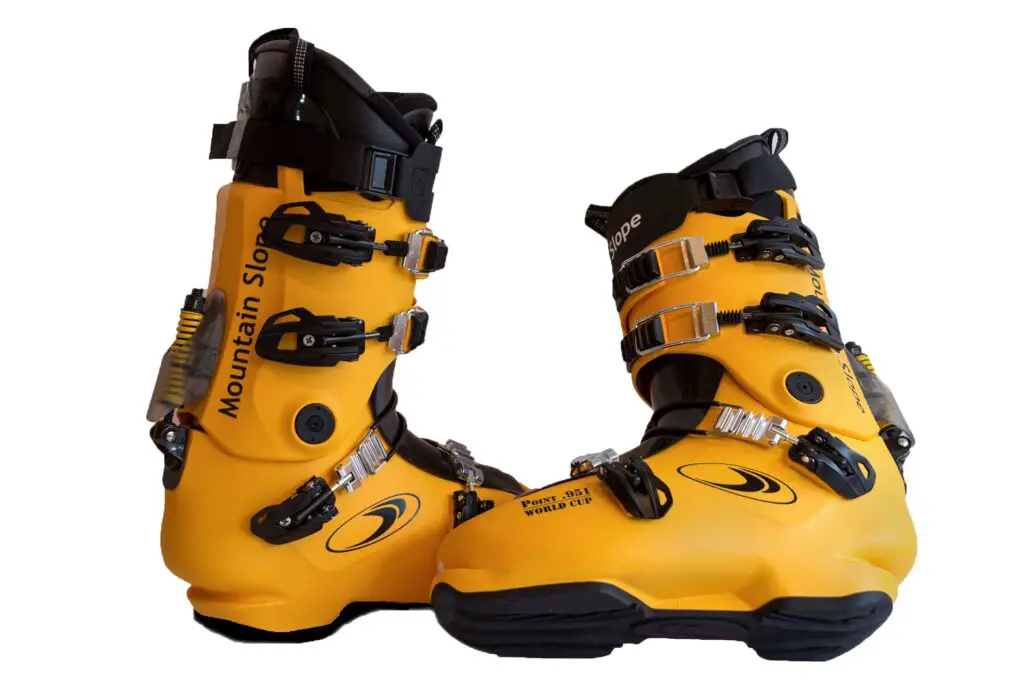
On the contrary, Hard Boots are not suitable for Freestyle Snowboarding tricks and maneuvers since they limit the amount of flexibility. This Type of Snowboard Boots is pretty specific and seriously lessens your freedom of choice. If you’re planning to buy this, make sure you find an exact match between the Binding Mechanism and the Hard Boot Mechanism. Also, make sure you can flex the Hard Boot forward easily and smoothly so as to avoid mishaps during transitions.
Hybrid Step-In Boots
These Snowboard Boots are a good choice for those who want the convenience of a strapless system. Hybrid Step-in Boots combine the flexible, soft upper part of Soft Boots and the sturdy hard soles of Hard Boots. They are used in combination with Step-in Bindings. People who are looking for a mix between the comfort and flexibility of Soft Boots and the control of Hard Boots will often opt for Hybrid Step-in Boots.
As with Hard Boots, you will need to find a match between the Step-in Binding mechanism and the Boot mechanism.
Before you buy Snowboard Boots, you must first decide whether you want to go with a Step-in Binding or a traditional Strap Binding. Remember, while traditional Strap Bindings will work with any non-Step-in Boots, Step-in Boots must be purchased together with their corresponding Bindings. Also, keep in mind that Hard Boot systems work best in harder snow conditions, while soft boot systems work best in softer conditions.

